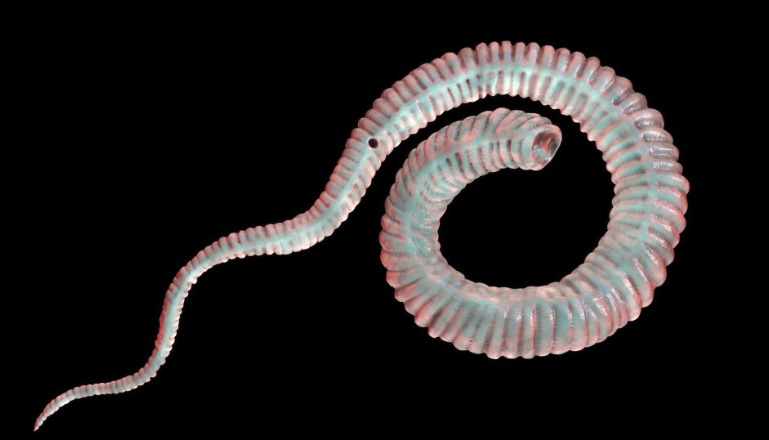The global effort to eradicate Guinea worm disease, or dracunculiasis, is nearing a historic milestone, thanks to decades of persistent, community-driven initiatives that have dramatically reduced human cases. However, recent challenges, particularly the rise of infections in domestic animals like dogs, threaten to reverse this progress. These setbacks underscore the unpredictable nature of disease eradication efforts and emphasize the need for flexible strategies in public health and laboratory research.
Understanding Guinea Worm Disease
Dracunculiasis is caused by the parasitic roundworm Dracunculus medinensis. People contract the disease by drinking water contaminated with tiny crustaceans that carry the worm’s larvae. Once inside the body, the larvae mature and migrate to an exit site – usually the foot or lower leg. A blister develops and bursts, creating an intensely painful wound through which the worm slowly emerges. While rarely fatal, the condition is debilitating. Treatment involves slowly extracting the worm over the course of several weeks, a meticulous process requiring great care to avoid breaking the worm, which could lead to secondary infections.
A Steep Epidemiological Decline
Dracunculiasis was once a widespread affliction across Africa and Asia. In 1986, when the World Health Assembly first launched its global eradication initiatives, an estimated 3.5 million cases were reported across 20 countries. By 2007, the disease remained endemic in nine of those countries, with Ghana and Sudan accounting for approximately 98% of global cases. However, by 2023, the number of cases had dropped to just 14 across five countries. This dramatic decline is largely due to a strong community-led eradication program.
The Power of Community-Led Efforts
The success of the Guinea worm eradication campaign is a powerful testament to how grassroots initiatives can transform public health. Local volunteers have been pivotal in tracking cases, educating the public and caring for the infected. They also help prevent infected individuals from contaminating water sources, a key factor in stopping transmission. Moreover, simple yet effective interventions, such as the distribution of fine mesh filters and pipe filters to households in affected areas, have been surprisingly effective in preventing infection. These tools filter out larvae from drinking water, interrupting the parasite’s life cycle.
This bottom-up approach has not only reduced transmission but also empowered communities to take ownership of their health. The program has also strengthened local health systems, particularly in countries like South Sudan, where its success has supported the integration of community health workers into the national healthcare infrastructure, creating long-term benefits beyond the scope of Guinea worm disease.
A New Challenge: Infections in Domestic Animals
Just as the eradication of Guinea worm disease seemed within reach, a new and unforeseen challenge has emerged: infections in domestic animals, particularly dogs. These animals have been found to carry the Guinea worm parasite, raising concerns about reinfection in humans and potentially reversing the progress made.
Adapting Strategies to Overcome Setbacks
In response to this new challenge, the eradication program has reassessed its strategies and adopted several new measures. Communities are now being urged to keep dogs away from water sources, especially those that may be contaminated, and to prevent them from eating raw fish entrails—a practice linked to the parasite’s spread. Additionally, fish waste is now securely disposed of, and infected dogs are closely monitored to prevent further contamination of water supplies. These measures aim to limit the potential for reinfection and prevent the disease from spreading through animal reservoirs.
The Road Ahead: Innovation
Researchers are actively developing new tools and treatments to combat Guinea worm infections in both humans and animals. One key development is a new quantitative PCR assay that targets the mitochondrial cytochrome b gene. This assay provides faster and more specific diagnoses, potentially reducing the need for time-consuming DNA sequencing processes.
Additionally, a novel monoclonal antibody (4E3D9) assay has been developed to detect Guinea worm infections in dogs. This highly sensitive tool has proven to be 90% sensitive and 98% specific, allowing infections to be detected in dogs months before symptoms appear. Early and faster detection is crucial, providing opportunity for timely intervention and preventing transmission. These assays represent a significant step forward in ensuring animal reservoirs do not derail the eradication effort.
Furthermore, clinical trials are underway to evaluate the efficacy of subcutaneously injected flubendazole as a treatment for Guinea worm infections in animals. While early results in ferrets have been promising, the treatment has shown less effectiveness in dogs, indicating the need for continued research and refinement.
Conclusion
The global campaign to eradicate Guinea worm disease stands on the verge of a historic success. Community-led efforts, combined with scientific breakthroughs, have brought us closer than ever to eliminating this debilitating disease. However, the recent rise of infections in domestic animals illustrates the unpredictable nature of disease eradication and the necessity for constant vigilance, adaptability and innovation.
References
Coker et al. Development and validation of a quantitative PCR for the detection of Guinea worm (Dracunculus medinensis). PLoS Negl Trop Dis. 2022;16(10):e0010830.
Cleveland et al. Investigating Flubendazole as an Anthelmintic Treatment for Guinea Worm (Dracunculus medinensis): Clinical Trials in Laboratory-Reared Ferrets and Domestic Dogs in Chad. Am J Trop Med Hyg. 2022;106(5):1456–65.
DeWeerdt S. Even with no drug or vaccine, eradication of Guinea worm is in sight. Nature. 2024 Jul 18. Epub.
The Carter Center. The Power of Community in Eradicating Guinea Worm Disease. 2024. https://www.cartercenter.org/health/guinea_worm/index.html
Priest et al. Development of a Multiplex Bead Assay for the Detection of Canine IgG4 Antibody Responses to Guinea Worm. Am J Trop Med Hyg. 2021;104(1):303-312.

